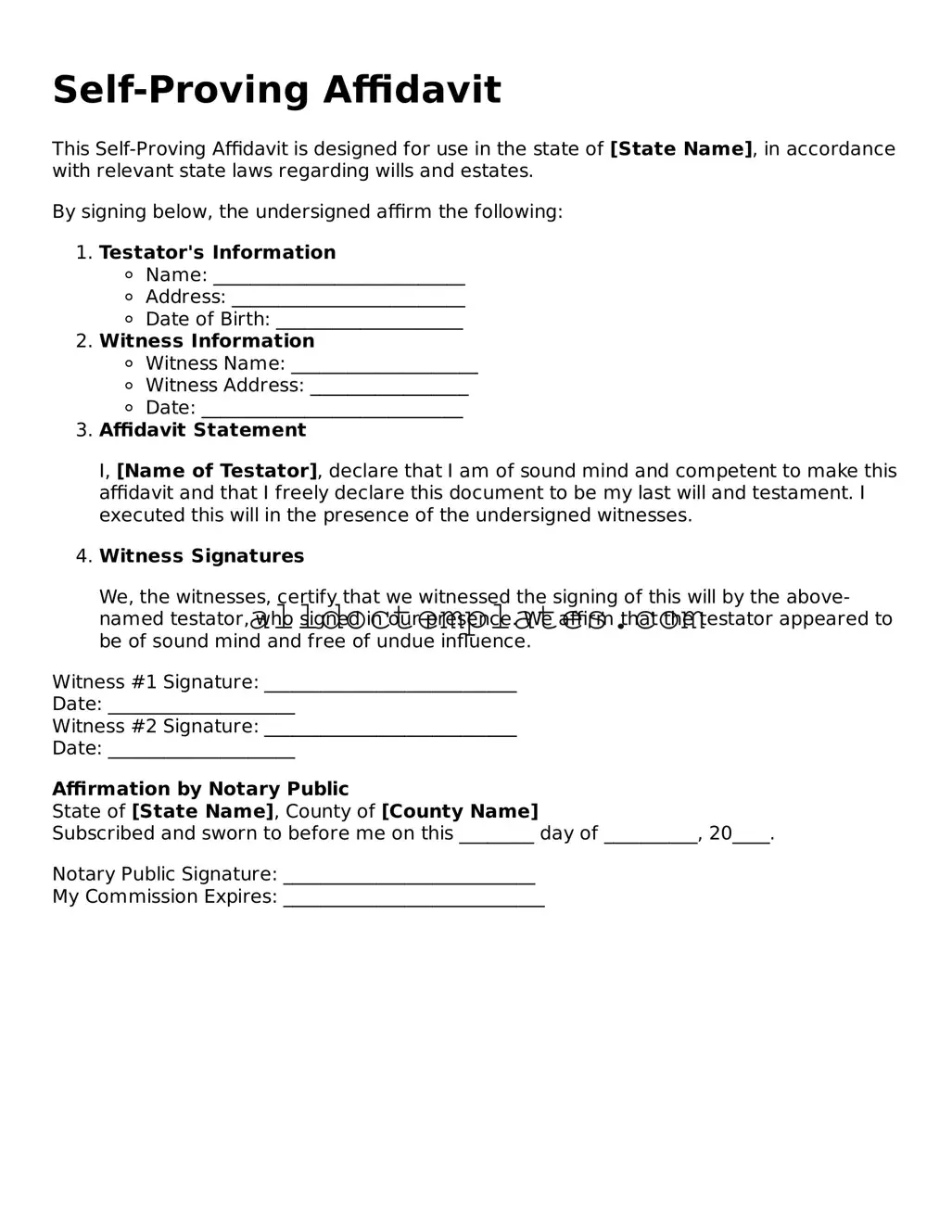Self-Proving Affidavit
This Self-Proving Affidavit is designed for use in the state of [State Name], in accordance with relevant state laws regarding wills and estates.
By signing below, the undersigned affirm the following:
- Testator's Information
- Name: ___________________________
- Address: _________________________
- Date of Birth: ____________________
- Witness Information
- Witness Name: ____________________
- Witness Address: _________________
- Date: ____________________________
- Affidavit Statement
I, [Name of Testator], declare that I am of sound mind and competent to make this affidavit and that I freely declare this document to be my last will and testament. I executed this will in the presence of the undersigned witnesses.
- Witness Signatures
We, the witnesses, certify that we witnessed the signing of this will by the above-named testator, who signed in our presence. We affirm that the testator appeared to be of sound mind and free of undue influence.
Witness #1 Signature: ___________________________
Date: ____________________
Witness #2 Signature: ___________________________
Date: ____________________
Affirmation by Notary Public
State of [State Name], County of [County Name]
Subscribed and sworn to before me on this ________ day of __________, 20____.
Notary Public Signature: ___________________________
My Commission Expires: ____________________________
